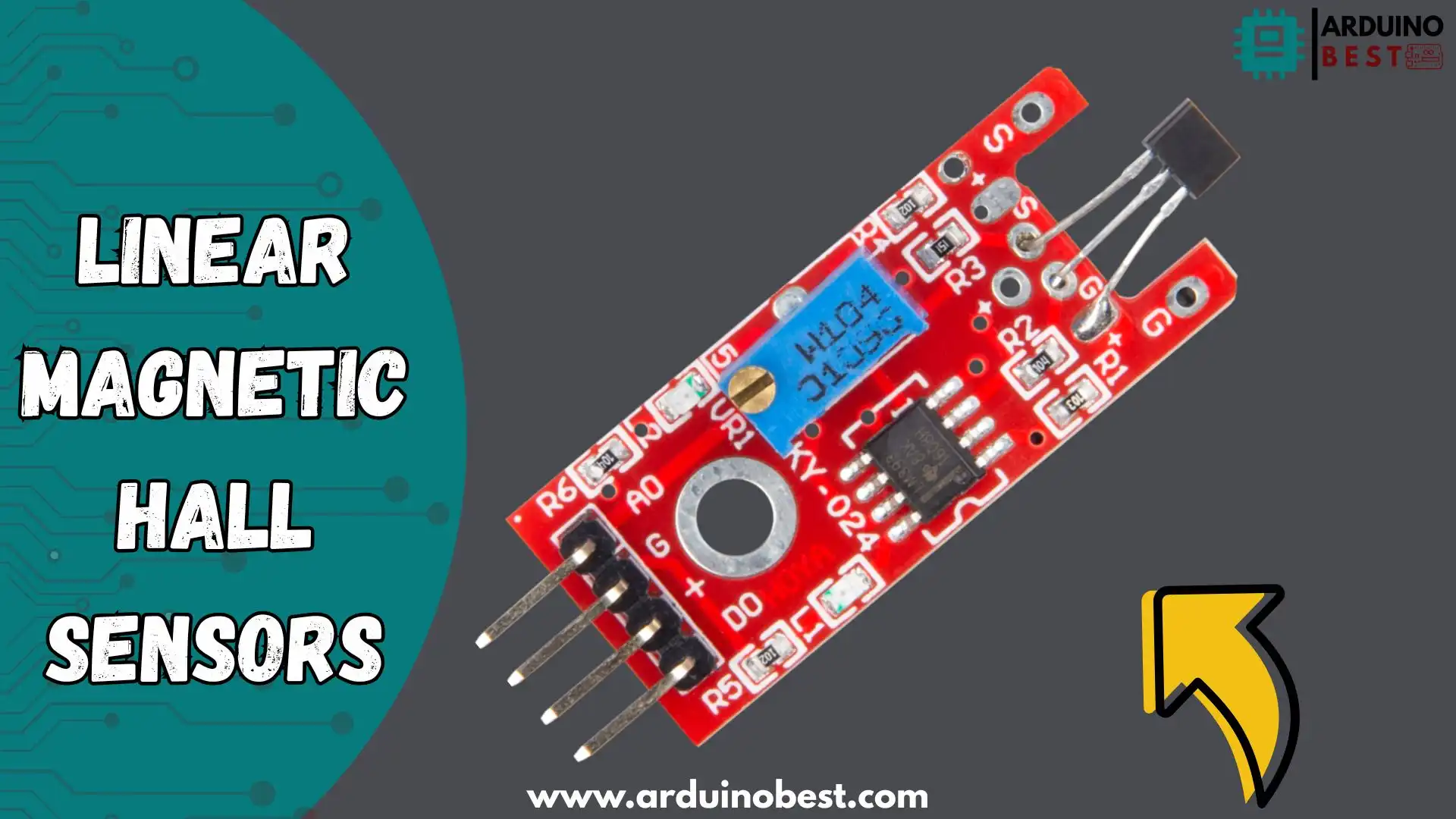Table of Contents
Linear magnetic Hall sensors are crucial components in modern electronics that detect magnetic fields and convert them into an electrical output. These sensors have widespread applications, from automotive systems to industrial automation and consumer electronics. In this article, we’ll dive deep into the working principle of these sensors, their features, benefits, applications, and more.
For a detailed understanding of Hall effect sensors, Texas Instruments provides great resources, including design and application notes. Similarly, Analog Devices offers insight into how Hall sensors are integrated into motor control and positioning systems.
What is a Linear Magnetic Hall Sensor?
A linear magnetic Hall sensor works based on the Hall effect, a phenomenon where a magnetic field is applied perpendicular to a conductor carrying current, producing a voltage that is measurable across the conductor. This voltage is directly proportional to the strength of the magnetic field.
- Working Principle: When a magnetic field is present, it induces a voltage in the sensor. The output signal is typically linear, which means the sensor provides a direct correlation between the strength of the magnetic field and the output voltage.
- Key Feature: These sensors provide real-time, continuous measurements of the magnetic field and are widely used for precise position sensing, speed detection, and motor control.
Key Features and Benefits of Linear Magnetic Hall Sensors
Linear magnetic Hall sensors offer several benefits that make them indispensable in various applications:
- High Accuracy: Linear Hall sensors provide precise measurements of magnetic fields with high accuracy, making them ideal for precise position sensing.
- Non-Contact Sensing: Unlike mechanical switches, Hall sensors operate without physical contact, reducing wear and tear and enhancing reliability.
- Compact Design: These sensors are small, making them easy to integrate into tight spaces in electronics and mechanical systems.
- Durability: Resistant to dust, dirt, and vibration, linear Hall sensors are perfect for industrial environments.
These benefits make them particularly useful in industries such as automotive, industrial automation, and consumer electronics.
Applications of Linear Magnetic Hall Sensors
Linear magnetic Hall sensors are used in a wide array of applications. Here are some key areas where they make a significant impact:
Automotive Applications
- Position Sensing: Linear Hall sensors are used in vehicles for precise position sensing in systems like throttle, brake, and steering.
- Speed Detection: These sensors are employed to measure the speed of rotating parts like wheels or shafts, ensuring smooth operation and safety.
Industrial Automation
- Linear Displacement Measurement: Hall sensors are frequently used in industrial machines to measure the linear displacement of moving parts, helping in the automation of systems.
- Speed Control in Motors: Linear Hall sensors are vital in motor control systems for speed regulation and fault detection.
Consumer Electronics
- Smartphones and Wearables: Hall sensors are integrated into consumer electronics, such as smartphones and fitness trackers, for functions like screen rotation and proximity sensing.
- Home Automation: Used in systems like door openers, security systems, and motorized blinds to detect position and motion.
Medical Devices
- Precise Measurements: Hall sensors are used in medical devices for accurate movement or position sensing, ensuring reliability in applications like pumps or prosthetics.
Types of Linear Magnetic Hall Sensors
There are different types of linear magnetic Hall sensors, each with unique characteristics to suit specific applications:
Analog vs. Digital Linear Hall Sensors
- Analog Hall Sensors: These sensors produce a continuous voltage output that is linearly proportional to the magnetic field.
- Digital Hall Sensors: These sensors provide discrete output signals, either “high” or “low,” depending on whether the magnetic field is above or below a certain threshold.
Surface-Mount vs. Through-Hole Hall Sensors
- Surface-Mount Devices (SMD): These sensors are designed for use in compact and automated assembly processes.
- Through-Hole Devices: Used for more rugged applications where direct physical connections are required.
IC-based Linear Hall Sensors
- Integrated Circuit (IC) Sensors: These sensors combine multiple Hall elements in a single IC, which simplifies the design and reduces the size of the system.
How to Use a Linear Magnetic Hall Sensor
Using a linear magnetic Hall sensor is straightforward, especially when integrating it with microcontrollers like Arduino:
- Integration with Microcontrollers: Linear Hall sensors can easily be integrated into Arduino-based projects. You can connect the sensor to the analog input pins of an Arduino board and use simple code to read the sensor’s output voltage and map it to the magnetic field strength.
- Circuit Design: A basic circuit consists of the sensor, a power supply, and a microcontroller for reading the output. Additional components like resistors and capacitors can help with signal conditioning.
For more detailed steps on integrating Hall sensors with microcontrollers, visit All About Circuits.
Choosing the Right Linear Magnetic Hall Sensor
When selecting a linear magnetic Hall sensor for your project, consider the following factors:
- Sensitivity: Choose a sensor with the appropriate sensitivity for your application. Higher sensitivity allows for detection of weaker magnetic fields, while lower sensitivity might be better for high-field applications.
- Voltage Range: Ensure the sensor’s voltage output matches your system’s voltage range.
- Temperature Stability: Consider the temperature range of your environment and select a sensor that can operate reliably under those conditions.
Future Trends in Linear Magnetic Hall Sensors
The field of Hall sensors continues to evolve, and future trends include:
- Miniaturization: Ongoing developments aim to make these sensors even smaller, allowing them to be integrated into more compact devices.
- Wireless Integration: As IoT applications grow, wireless Hall sensors may become more prevalent for remote monitoring and control.
- AI and Machine Learning: The integration of Hall sensors with AI technologies will improve the accuracy of motion detection and position sensing, especially in autonomous vehicles and robotics.
FAQs
What is the difference between a linear Hall sensor and a digital Hall sensor?
- Linear Hall sensors provide a continuous output signal, while digital Hall sensors offer a discrete signal indicating whether the magnetic field is above or below a threshold.
How accurate are linear magnetic Hall sensors?
- These sensors offer high precision, with accuracy typically in the range of 1% to 5%, depending on the sensor model and the application.
What are the common uses of linear magnetic Hall sensors?
- They are used in automotive systems, robotics, industrial automation, medical devices, and consumer electronics for position and speed sensing.
Can linear Hall sensors be used in harsh environments?
- Yes, linear Hall sensors are resistant to dirt, dust, and vibration, making them suitable for rugged environments like automotive and industrial applications.
How do you calibrate a Hall sensor?
- Calibration involves measuring the output at known magnetic field strengths and adjusting the sensor readings accordingly to improve accuracy.
Conclusion
In conclusion, linear magnetic Hall sensors are indispensable components in modern electronics, offering accurate and reliable solutions for a wide range of applications. Their ability to detect magnetic fields and convert them into electrical signals makes them crucial in industries such as automotive, robotics, and consumer electronics. These sensors are often preferred for their non-contact nature, ensuring durability and long-term reliability.
Whether you’re working on automotive systems, motion control, or industrial automation, linear Hall sensors provide excellent performance in detecting position, speed, and orientation. Understanding the various types of Hall sensors available and their specific uses will allow you to select the most suitable option for your project. As technology continues to advance, the demand for more precise and efficient sensors like linear magnetic Hall sensors will continue to grow, ensuring their importance in the development of innovative systems.
By leveraging the capabilities of Hall sensors in your designs, you can enhance the functionality and accuracy of your projects, whether they are consumer gadgets, industrial equipment, or cutting-edge automotive technologies. Embracing these sensors will lead to more efficient, cost-effective, and durable solutions for your needs.
Arduino Projects:
1- Complete Guide for DHT11/DHT22 Humidity and Temperature Sensor With Arduino
2- DHT11 – Temperature and Humidity Sensor
3- DHT22 – Temperature and Humidity Sensor (more accurate than DHT11)
4- BMP180 – Barometric Pressure and Altitude Sensor
5- BMP280 – Barometric Pressure & Temperature Sensor
6- BME280 – Temperature, Humidity, and Pressure Sensor
7- Arduino Flex Sensor Controlled Robot Hand
8- Arduino ECG Heart Rate Monitor AD8232 Demo
9- Arduino NRF24L01 Wireless Joystick Robot Car
10- Arduino Force Sensor Anti-Theft Alarm System
11- Arduino NRF24L01 Transceiver Controlled Relay Light
12- Arduino Rotary Encoder Controlled LEDs: A Complete Guide

